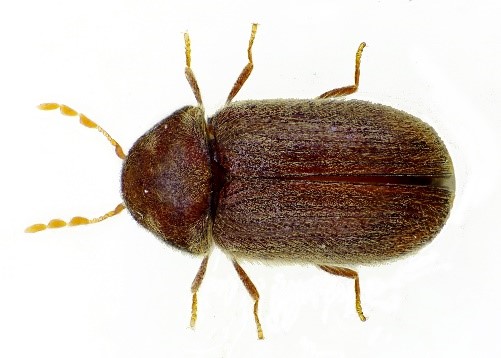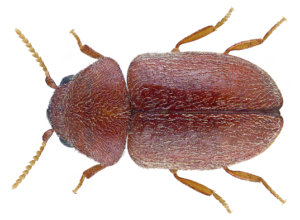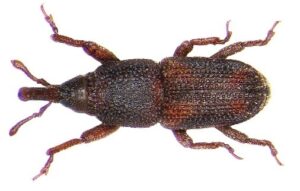Cigarette Beetle
General Description
|
· Adult cigarette beetles are light brown, about 3 mm long, and fly readily. The head is bent downward, so the beetle has a distinct hump-backed appearance. · The larva resembles the drugstore beetle larva, but the body hairs of the cigarette beetle are considerably longer, giving it a more fuzzy appearance.
|
|
Life Cycle and Common Characteristics
- The female lays about 30 eggs over a period of about three weeks in newly harvested tobacco or other susceptible food items.
- The adults are most active during the early evening hours- unless temperatures are below 18.3°C, which causes them to stay closer to their harborage areas.
- Adults hide during the day in dark places. Even though they are strong fliers, their primary means of spreading is via infested materials transported by humans.
Damage and Economic Implications
- The cigarette beetle is the most important pest of stored tobacco. It may also be a serious pest of items such as books, flax tow, cottonseed meal, rice, ginger, pepper, paprika, dried fish, crude drugs, seeds, pyrethrum powder, and dried plants.
- Larvae feed on dried tobacco leaves, causing great damage.
- The color is nearly white throughout, except for a distinctive group of yellowish-brown markings on the front surface of the head. The lower margin of the head is colored, and a series of four spots are arranged just above this area in such a way that a pattern suggestive of a little clown-like face is formed.


 Credit: Udo Schmidt
Credit: Udo Schmidt
